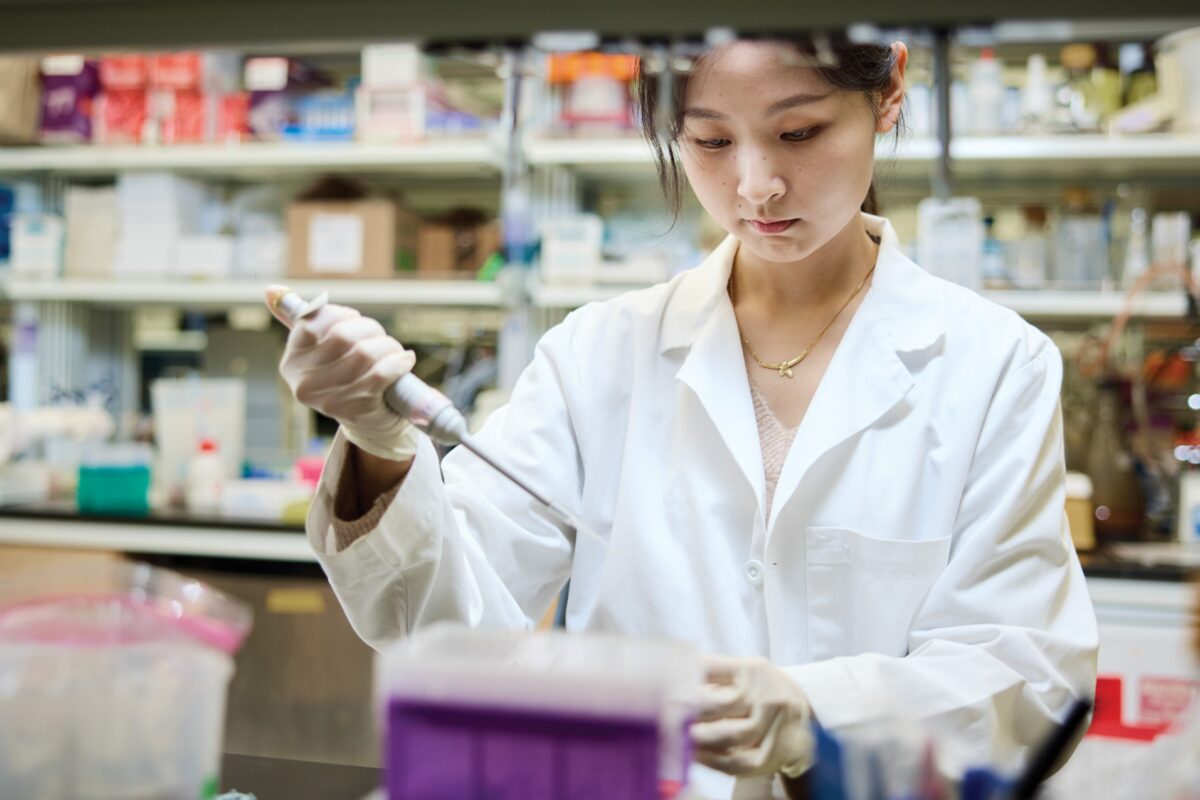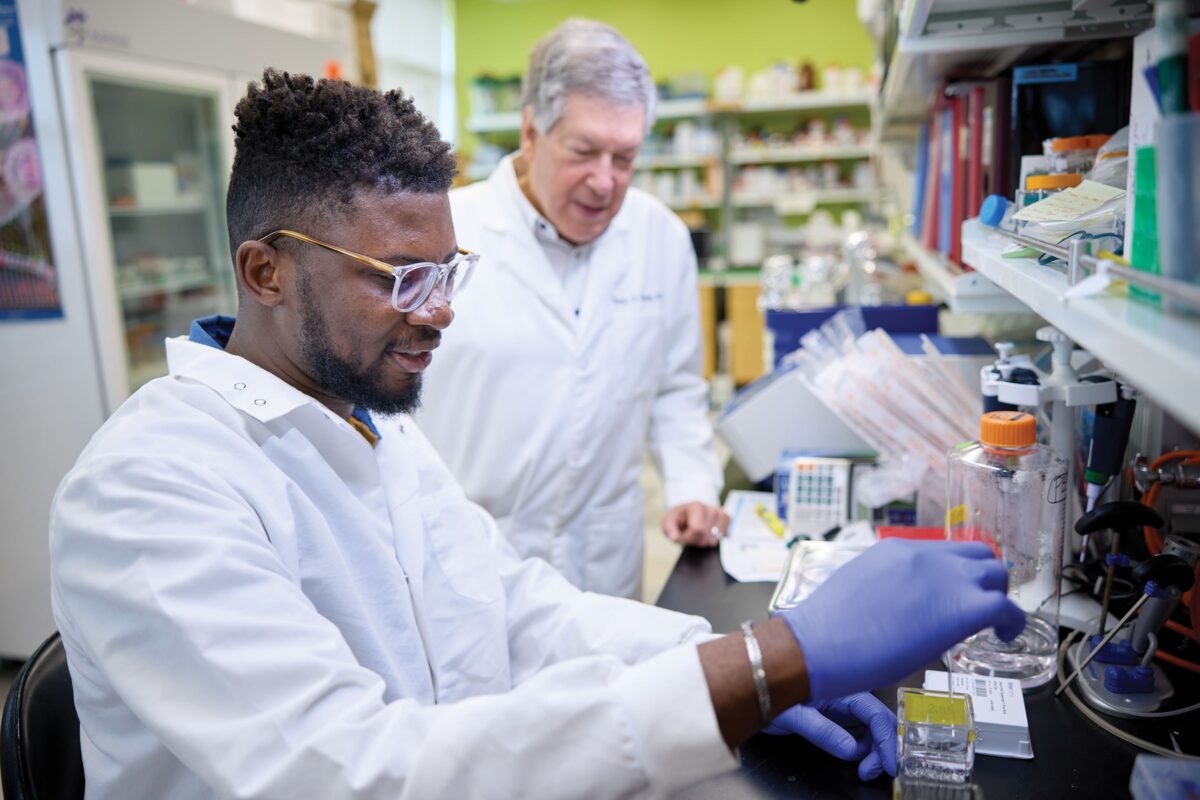
WashU Medicine physicians at Siteman Cancer Center are recognized nationally for their expertise in leading-edge breast cancer therapies. Nearly 50 specialists in surgery, breast reconstruction, medical oncology and radiation oncology, radiology and pathology are part of the Breast Cancer Program at Siteman, providing personalized treatment plans for patients. Advanced genetic testing, including tests developed by WashU Medicine researchers, help predict which treatments are likely to be most effective.
One major area of focus for WashU Medicine researchers is identifying women at high risk. While breast density tends to decrease with age, studies evaluating mammograms — led by cancer prevention pioneer Graham A. Colditz, MD, DrPH, the Niess-Gain Professor of Surgery; director of the Public Health Sciences Division in the Department of Surgery; and associate director of prevention and control at Siteman, and Shu “Joy” Jiang, PhD, a WashU Medicine associate professor of surgery in the Public Health Sciences Division — have found the decline is significantly slower in women who later developed breast cancer. The research opens the door to harnessing information captured by mammograms over time to predict who is at highest risk.
“Siteman Cancer Center is one of the nation’s leaders in breast cancer screening and treatment,” said Debbie L. Bennett, MD, chief of the breast imaging section and an associate professor of radiology at WashU Medicine’s Mallinckrodt Institute of Radiology. “The two go hand in hand, because the earlier you can find the cancer, the easier it is to treat and the better the outcomes for patients. Our care is informed by the latest research discoveries, and that’s one of the distinguishing features of Siteman.”
Colditz also is developing ways to predict which patients with an early form of breast cancer — ductal carcinoma in situ (DCIS) — are at highest risk of progressing to invasive breast cancer. Colditz and his collaborator at WashU Medicine, Richard J. Cote, MD, the Edward Mallinckrodt Professor and head of the department of Pathology & Immunology, are leading studies of the 3D environment of breast tumors. Using new technology called PhenoCycler (formerly CODEX), they can visualize the spatial relationships of many cell types in breast tissue and tumors, including immune cells, in the transition from DCIS to invasive breast cancer to enhance prediction. They also are studying changes the tumors undergo in response to therapies.

Robert D. Schreiber, PhD, the Andrew M. and Jane M. Bursky Distinguished Professor, is a pioneer in designing immunotherapies for many different types of cancer. As a leader in the field of cancer immunotherapy and director of the WashU Medicine Bursky Center for Human Immunology and Immunotherapy Programs, he is using PhenoCycler technology to understand how tumors respond to immunotherapy.
Artificial intelligence (AI) and 3D mapping are changing the way we look at cancer
WashU Medicine and Whiterabbit.ai researchers have developed an AI algorithm that enhances breast cancer screening by identifying and filtering out normal mammograms, thereby allowing radiologists to focus on more questionable scans. The approach has been shown to reduce false positives without missing any cancers. And technologies like PhenoCycler (formerly CODEX) are helping WashU Medicine doctors use spatial biology to predict which patients are at the highest risk of invasive breast cancer and whether the tumors will respond to certain therapies.
“PhenoCycler technology gives us a way to map and analyze hundreds of cells in intact tissue in 3D all at once and to follow changes over time,” Schreiber said. “It gives us an unbelievable view of where cancer cells and different types of immune cells are, which helps us understand what immunotherapy is doing — or not doing — to a tumor, so we can improve these therapies and design new ones.”
Despite efforts in early detection and treatment, some breast cancers continue to present challenges, including triple-negative breast cancer, in which the tumor grows even without the hormonal fuel that drives the growth of most breast cancers. For unknown reasons, it is more common and deadly in Black populations, making research in this area critical in reducing racial disparities. Jason Weber, PhD, a WashU Medicine professor of medicine and co-leader of the Breast Cancer Research Program at Siteman, and his team have identified molecular pathways that drive growth of this tumor type and that appear to be more common in Black populations. By studying the genetic and molecular underpinnings of triple-negative breast cancer, they are identifying possible ways to shut down the pathways driving its growth.
WashU Medicine researchers also are invested in developing better treatments for metastatic breast cancer. Sheila A. Stewart, PhD, the Gerty T. Cori Professor of Cell Biology & Physiology and vice chair, department of Cell Biology & Physiology at WashU Medicine and co-leader of the Mechanisms of Cancer Biology Program at Siteman, and her team have identified a new drug combination that is effective in mice with metastatic breast cancer. One drug disrupts the protective environment that tumors build to shield themselves from attack, and a second drug activates immune cells called T cells that then have better access to the unprotected tumor and are more effective at killing cancer cells.
Explore the extensive scope of cancer care and research.
Published in the Autumn 2024 issue


